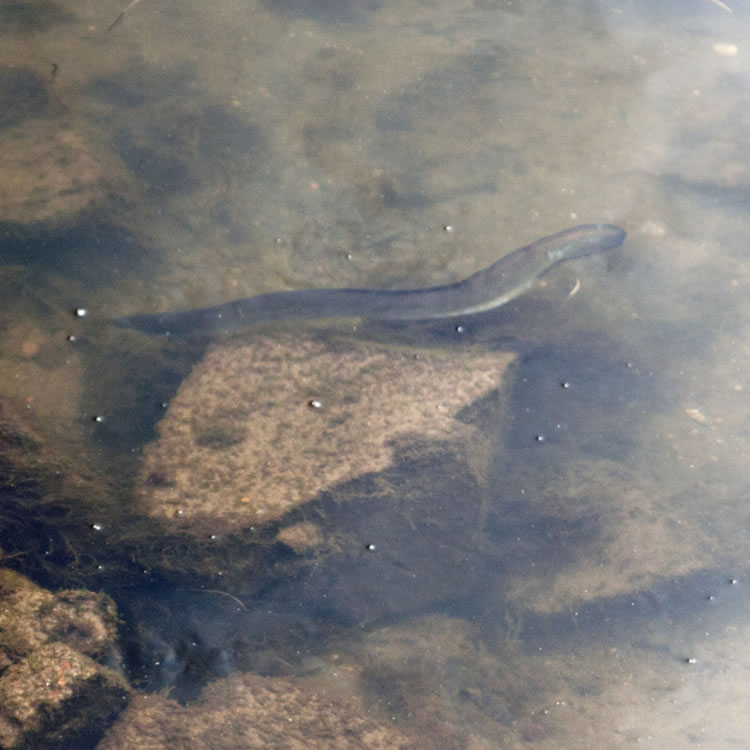Short-finned eel

Community type
Habitat type
Tidal wetlands and macrophytes beds
These snake-like fish spawn thousands of kilometres north of Tasmania in the warm waters of the Coral Sea. The tiny babies, called glass eels because they are transparent, are carried by currents down the east coast of Australia till they reach southern Tasmania. Then they sense the fresh water and follow it, moving upstream, and travel as far inland as they can reaching farm dams and small streams in the upper catchment. When they enter freshwater they turn black and become juvenile ‘elvers’. They live there just feeding themselves until they get to 1 kg and mature, which takes between 10 to 35 years. Then the eels start the long trip back to the sea and migrate north to complete their amazing life cycle. Short-finned eel are widespread and common in Tasmania, and elvers are seen in the Derwent estuary each year as they head upstream. Dams, culverts and other human infrastructure present a big problem for these and many other migratory fish, causing a barrier to upstream movement. Fish passageways or traps have been installed at a number of locations in Tasmania to enable eels and lampreys to get through. One example is at Meadowbank Dam on the Derwent River. This trap enables eels and lampreys to swim in. It then needs raising up the dam wall to release the fish on the high side, enabling them to continue their journey. With the highway and railroad blocking part of Goulds Lagoon from the estuary, eels can no longer find their way into the lagoon to make it their home. Eels are mainly carnivorous feeders, eating all manner of aquatic animals including fish, insects, yabbies, shrimps, molluscs and frogs.
